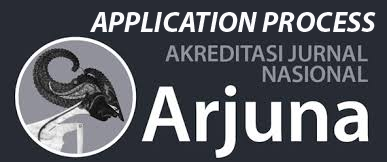Peran Kepemimpinan Camat Cakung dalam Meningkatkan Kinerja Pegawai pada Kantor Kecamatan Cakung Kota Administrasi Jakarta Timur
DOI:
https://doi.org/10.59024/jumek.v2i4.483Keywords:
Leadership Role, Employee Performance, Cakung Subdistrict HeadAbstract
The Leadership of the Cakung Subdistrict Head has a crucial role in creating positive changes in improving employee performance, work environment, and improving the quality of public services in Cakung Subdistrict. In the above context, his duties and functions as sub-district head are manifested in programs and policies. First, encourage community participation to take part in development planning within the sub-district in the development planning deliberation forum (Musrenbang), second, provide guidance and supervision of all work units, both government and private companies that have work programs and community empowerment activities in sub-district work areas, thirdly, carry out evaluations of community empowerment activities in sub-district areas, both carried out by government and private work units. The research method uses a descriptive method with a qualitative approach, namely taking data related to the problem to be researched so that it can be described descriptively, qualitatively and comprehensively, namely describing the prevailing reality and discussing the problems raised in relation to the research object, namely the role Leadership and Organizational Culture in Improving the Performance of Cakung District Office Employees, East Jakarta. From the research results, it is revealed that the Cakung sub-district head has so far fulfilled the elements of effective Leadership character which have an impact not only on aspects of employee performance, but have had a positive impact on the institutional image in a positive way or the positive image of the Cakung sub-district office in the eyes of the publik and stakeholders, especially the community in the sub-district area. Cakung. These aspects of Leadership character include aspects of the Leader as a "Figurehead", as a "Leader", as a "Liason", as an "Interpreneur", as a "Resource Allocation", as a "Disturbance Handle", as a problem solver or problem solver), and aspects of the Leader as “Monitor and “Desiminator” and as “Spoke Person”.
References
Adhari, L. Z. (2020). Optimalisasi kinerja karyawan menggunakan pendekatan knowledge management & motivasi kerja. CV Penerbit Qiara Media.
Adji, W. H., Setia, M. I. R. N., & Nupardi, D. (2022). Pengaruh gaya kepemimpinan camat dalam meningkatkan kinerja pegawai di Kecamatan Arjasari Kabupaten Bandung. Jurnal Co Management.
Afandi, P. (2018). Manajemen sumber daya manusia: Teori, konsep dan indikator. Zanafa Publishing.
Bray, & Rue. (2021). Manajemen sumber daya manusia. [PDF file]. Retrieved from [URL].
Hamali, A. Y. (2018). Pemahaman sumber daya manusia. PT Buku Seru.
Hamdi, N., & Zulkarnaen. (2021). Analisis efektivitas gaya kepemimpinan. Frontiers in Neuroscience.
Handoko, T. H. (2020). Manajemen personalia dan sumber daya manusia (2nd ed.). BPFE.
Hulu, J. M., Progresif, B., & Gohae, A. S. (2021). Pengaruh kepemimpinan dan kompensasi terhadap motivasi kerja pegawai di Kantor Camat Mazo Kabupaten Nias Selatan. Jurnal Ilmiah Mahasiswa Nias Selatan, 4(2), 36–45.
Mangkunegara, A. A. P. (2014). Evaluasi kinerja SDM (6th ed.). Refika Aditama.
Mangkunegara, A. A. P. (2016). Manajemen sumber daya manusia. PT Rosdakarya.
Maulini, H. (2020). Pengaruh gaya kepemimpinan terhadap kinerja karyawan CV. Karya Mitra Sukses.
Permadi, K. (2016). Pemimpin dan kepemimpinan dalam manajemen. Rineka Cipta.
Prasadja, R. (2020). Human capital management. In Media.
Purwanto, M. (2023). Strategic leadership dalam organizational readiness for change dan arah penelitian masa depan. ULIL ALBAB: Jurnal Ilmiah Multidisiplin, 2(3), 1104–1113.
Rerung, R. R. (2019). Peningkatan kinerja karyawan melalui employee engagement dan organizational citizenship behavior. CV. Media Sains Indonesia.
Sinaga, O. S. (2020). Manajemen kinerja dalam organisasi. Yayasan Kita Menulis.
Smith, M. D. (2007). The practical executive and leadership. NTC Business Books.
Soliha, E., & Hersugondo. (2018). Kepemimpinan yang efektif dan perubahan organisasi. Fokus Ekonomi.
Sugiyono. (2020). Metode penelitian bisnis. Alfabeta.
Sukarna. (2020). Kepemimpinan dalam administrasi. Mandar Maju.
Suparyadi. (2015). Manajemen sumber daya manusia. CV Andi Offset.
Thoha, M. (2023). Kepemimpinan dalam manajemen. C.V. Rajawali.
Downloads
Published
How to Cite
Issue
Section
License
Copyright (c) 2024 Jurnal Manajemen dan Ekonomi Kreatif

This work is licensed under a Creative Commons Attribution-ShareAlike 4.0 International License.








